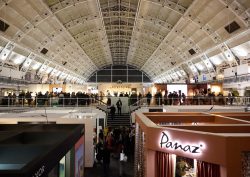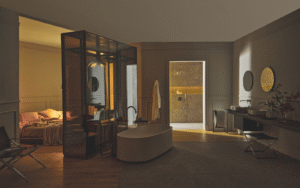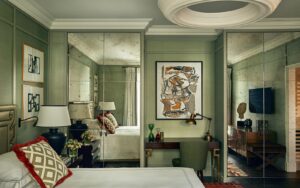Hamish Kilburn, Editor of Hotel Designs, shares his takeaways from a recent panel discussion he hosted, inside the Poltrona Frau showroom in London. On the sofa with him was Marie Soliman, Co-Founder of Bergman Design House and Jessica Morrison, Senior Associate at G.A Group. The topic? Fusing creativity through meaningful collaborations…
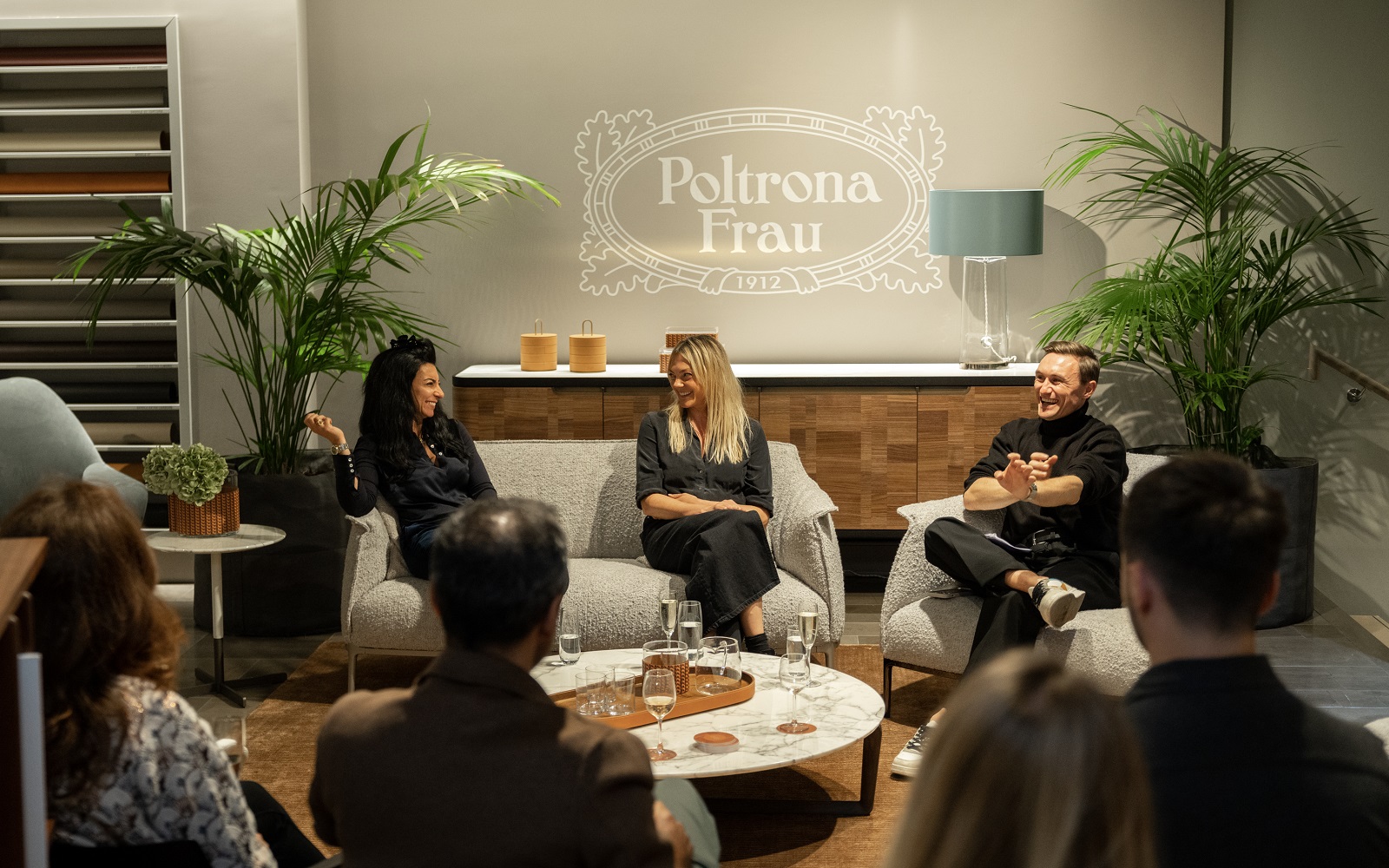
Design collaboration in the interiors arena is not a new concept. Like fashion and retail, interior designers have long seen the value of putting two (or more) heads together to take an idea from being an empty concept to being a marketable product. Take Poltrona Frau, for example. In the past, the Italian furniture brand, renowned for its exquisite craftsmanship, has partnered with iconic figures like Jean-Marie Massaud, Roberto Lazzeroni and Ozwald Boateng as well as acclaimed architects such as Renzo Piano and Norman Foster.
Beyond just the notion of working together to create a statement product that sells, though, in recent years there has been a louder demand for the design community to come together to create deeper narratives in interiors. To highlight the value of socially and craft-driven partnerships, Hotel Designs put the topic in front of a live audience for its recent panel discussion.
On the sofa:
- Jessica Morrison, Senior Associate, G.A Group
- Marie Soliman, Co-Founder, Bergman Design House
- Moderated by Hamish Kilburn, Editor, Hotel Designs
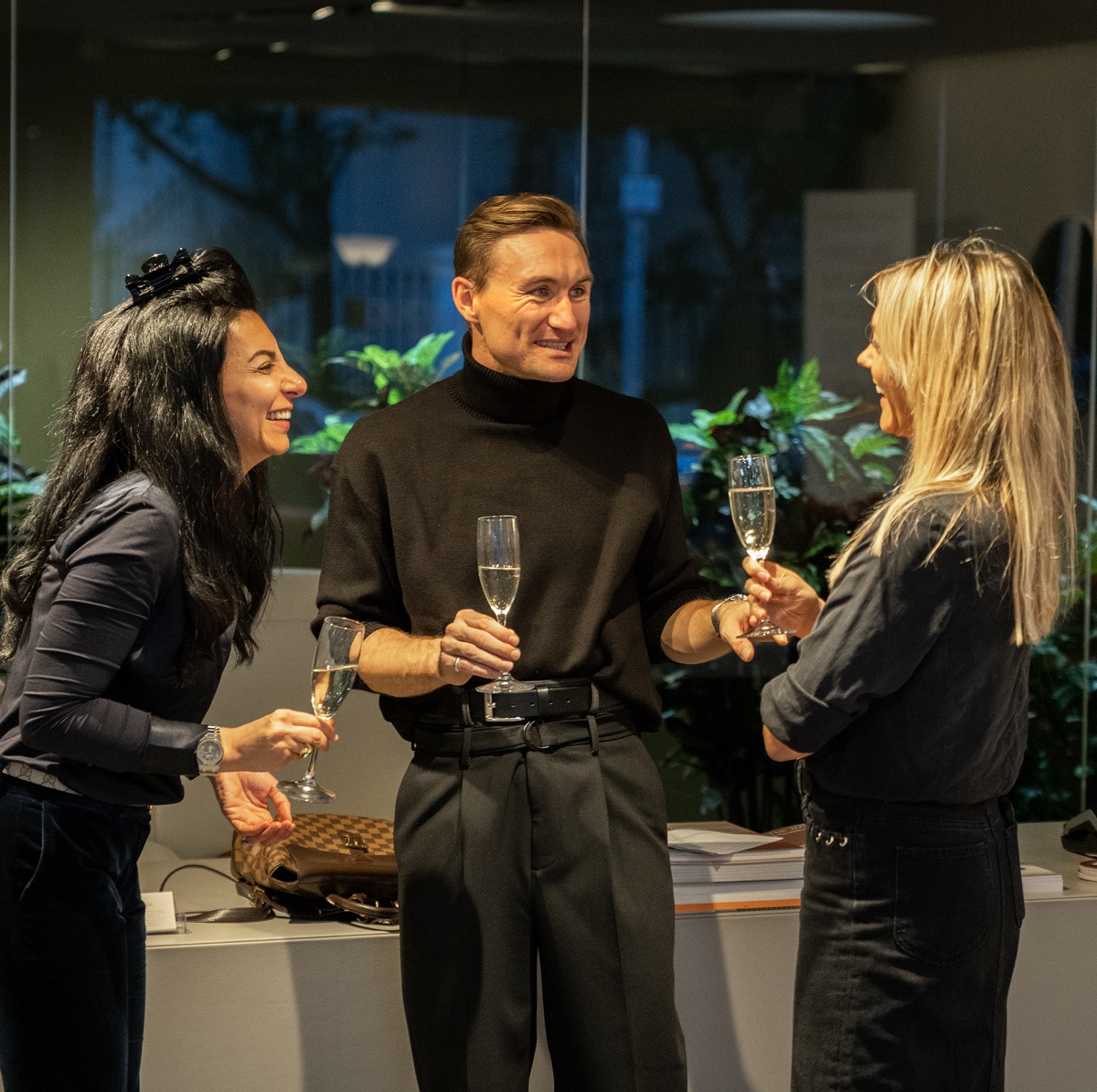
Image caption: Marie Soliman, Hamish Kilburn and Jessica Morrison catching up ahead of the panel discussion. | Image credit: OL Visual
Hamish Kilburn: How has a more transparent relationship between client and designer impacted the overall project, from concept to completion?
Jessica Morrison: That relationship you build, on hotels, is a minimum of three years – often much longer. You have to build that trust. We always try to challenge the client. We want to meet their desires but obviously challenge them to do more. This works both ways, of course, and the client also challenges us when, for example, they don’t accept the first idea.
At the end of the day, if both the client and the designer want to achieve the same end result then I think the process of challenging each other is really important.
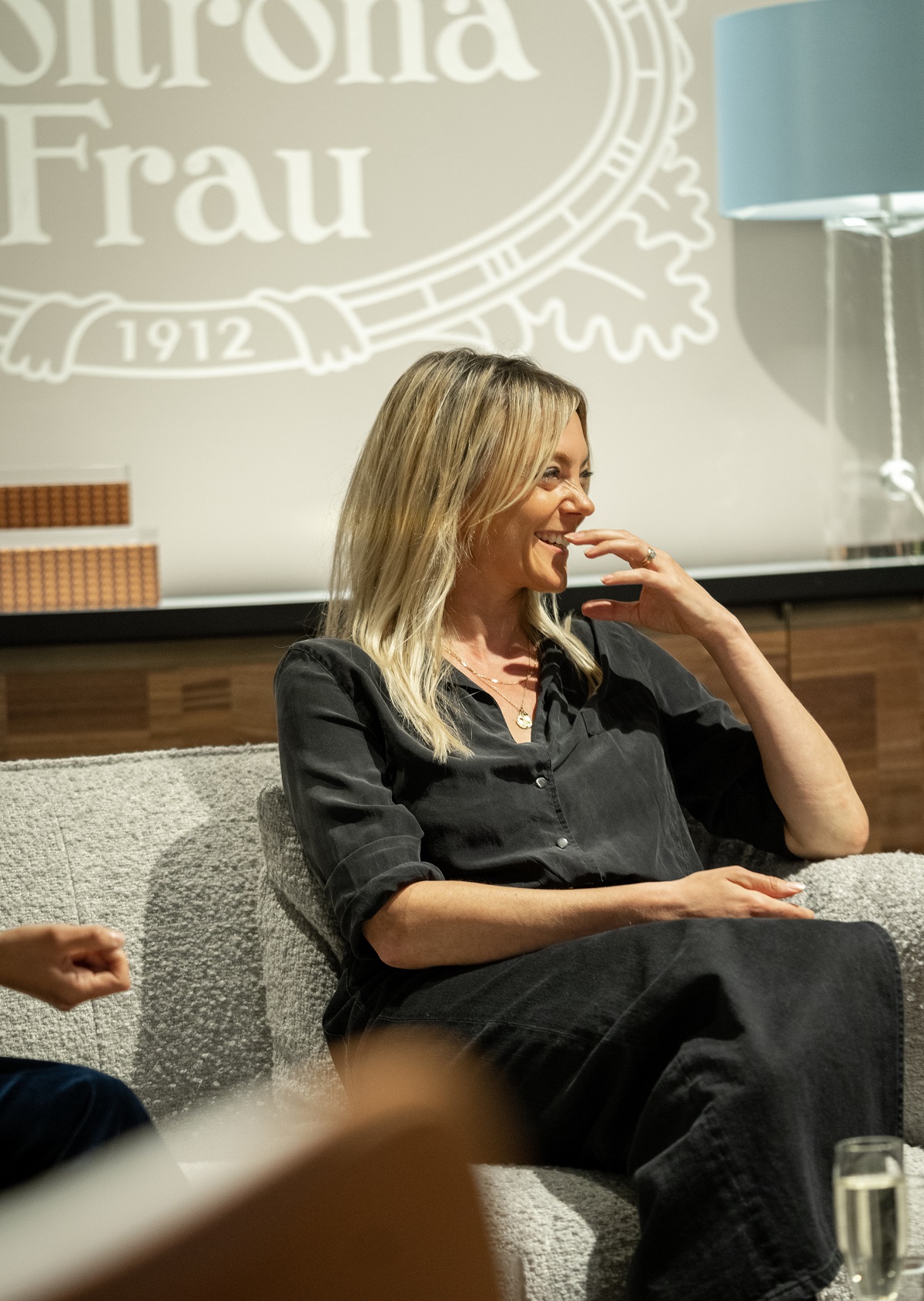
Image caption: Jessica Morrison, Senior Associate at G.A Group, discussing the various design collaborations inside 1 Hotel Mayfair. | Image credit: OL Visual
Hamish Kilburn: Marie, since setting up your own studio with Albin Berglund, have you gained more respect from clients?
Marie Soliman: The client is always right. Albin and I learned a lot working in a studio setting as senior designers. I have to say, though, since setting up our own studio, we are able to put more of our personalities into our client relationships – and sometimes we can be blunt around what will work and what will not. From my experience, clients respect that honesty.
The clients we attract at Bergman Design House know already that I will not just say ‘okay’. I think as long as you have a solid reason and, more importantly, a solution, then this feedback is constructive.

Image caption: Marie Soliman, Co-Founder, Bergman Design House, discussing the value of honest client relationships. | Image credit: OL Visual
HK: Clients need boundaries, though. How do you set these so that the working relationship continues to be balanced?
MS: You have to learn to be uncomfortable to be comfortable. If you are expecting that a client relationship over five years will be seamless throughout then you are delusional. You have to learn not to take things personally and to leave your ego out of meetings. Essentially, it is about listening.
JM: The ideal client will make decisions early on, stick to them, adhere to the program – you don’t always have to agree, but on the whole everyone will stay aligned to the process so that the hotel gets built. However, the reality is that the client can change their mind at every stage of the project.
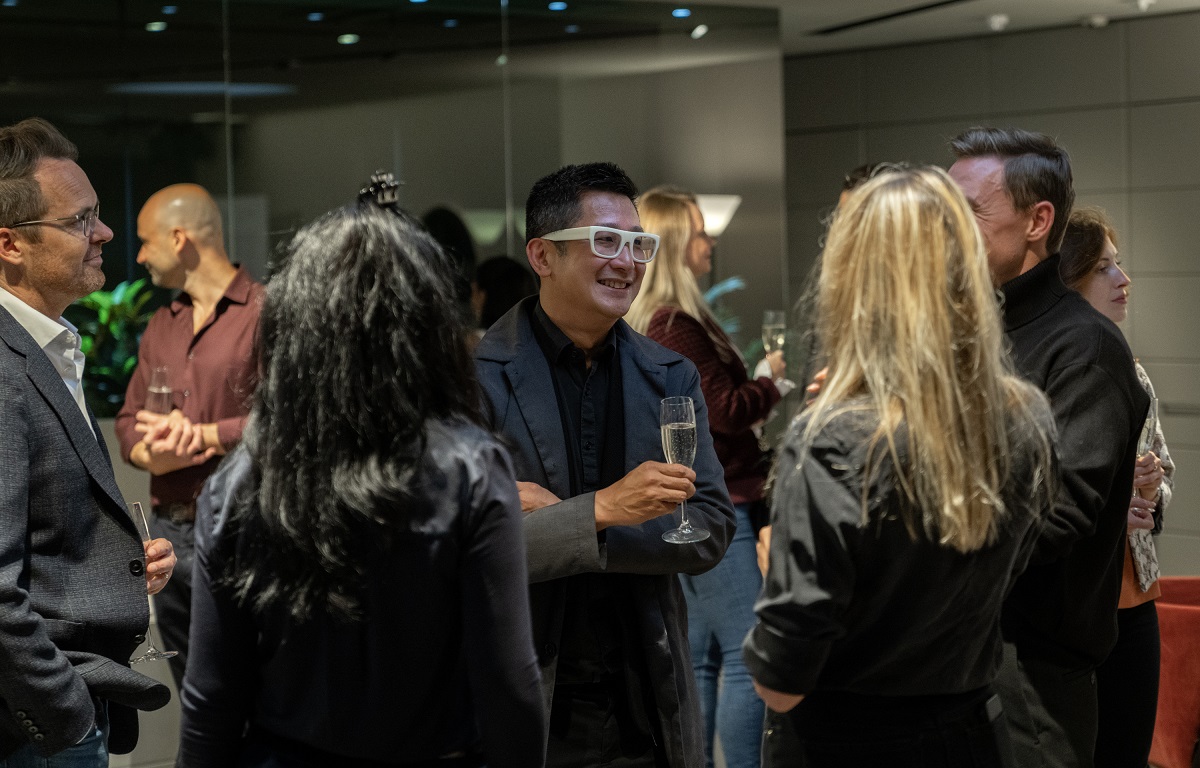
Image caption: Interior designers were invited to Poltrona Frau’s London showroom to watch the panel discussion live. | Image credit: OL Visual
HK: Let’s talk about celebrating local craft. This is certainly more apparent in recent hotels that have opened. Where do you start when finding these local talents?
JM: Taking a step back, the people we chose to collaborate with on these projects need to be good at their craft – we are not collaborating for the sake of it. You need to find someone who is at the top of their game or someone who is obsessed with their craft. In 1 Hotel Mayfair, for example, we researched British heritage crafts, and one of those was dry-stone walling. It wasn’t an artist, or someone who had exhibited, it required us to call around Yorkshire stone yards. For me, it was important that we were tapping into something authentic, which I think comes across in the design.

Image caption: The lobby inside 1 Hotel Mayfair. | Image credit: Jon Day
Design collaborations don’t have to be local in my eyes. For the same hotel, guests will notice an oversized living chandelier when they walk in to the lobby. I love the narrative behind that piece. We attended a famous garden exhibition in France where we met a studio that created these small dome elements. The artistic and design collaboration took off from there. For us, we wanted to challenge them to produce their work on a larger scale and for it to be more refined, because the hotel is situated in Mayfair.
HK: Is this movement, to establish these deep collaborations, translating in other sectors where budget it less of an obstacle?
MS: Adding sense of place in marine projects is difficult because these vessels are not designed to be in the same place for very long. Also, in luxury yachts, budget is rarely an issue. With these projects, it’s about designing something that feels very personal for the client.
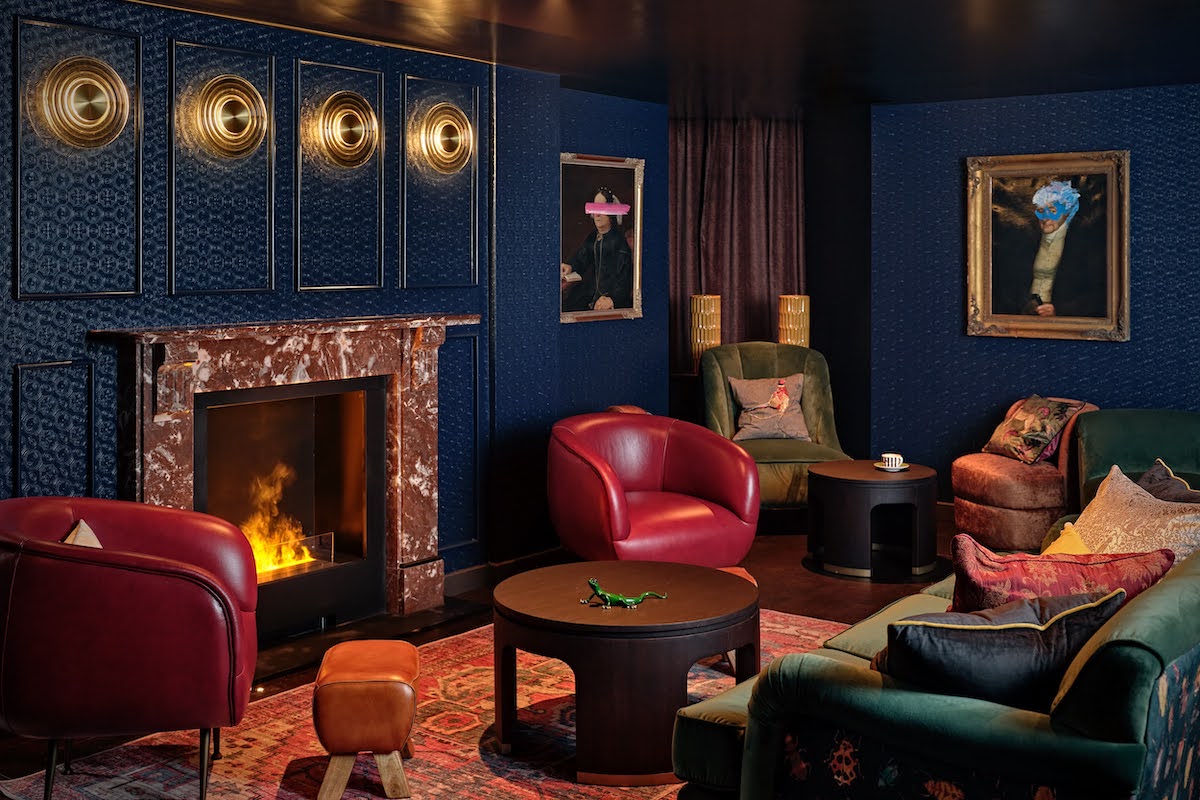
Image caption: The members’ lounge inside The Other House South Kensington credit: The Other House
I think there is a misconception around the word ‘budget’ in hotel design. For The Other House in South Kensington, for example, we were on a tight budget, but the guest would never know. I am so proud that we achieved a playful design narrative that was also conscious (there is a lack of marble and we used a lot of British manufacturers throughout). The word budget is a myth. If you are a good interior architect who knows how to layer – and you know where to spend the money – then there are options.
HK: Often with this topic, we talk about crossing boundaries into new territories for inspiration. What can interior designers learn from the fashion arena?
JM: We always draw from culture, whether that’s fashion, art, theatre or travel. That has always been the case. I think collaborations between manufacturers and fashion designers are really interesting because they will bring different experience and detailing forward. As a designer, you try to be sensitive to everything.
MS: These types of collaborations are special – they mean something. They are the result of real conversations and the designer researching into brand.
Poltrona Frau is one of our Recommended Suppliers and regularly features in our Supplier News section of the website. If you are interested in becoming one of our Recommended Suppliers, please email Katy Phillips.
Main image credit: Poltrona Frau






